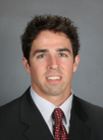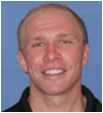Interview by Art Horne
Stu, in both your books and dvd’s you emphasize this concept of “capacity” and it’s importance, yet when discussing with sports medicine and strength colleagues this concept is still either misunderstood or not truly appreciated. Can you discuss this concept briefly and also touch upon how a collegiate basketball athlete can protect their “capacity” during the course of a day while attending classes, etc during a normal school day so that they are either able to be productive during a therapeutic exercise program later in the day or able to train at a high level without getting hurt?
Answer: Athletes have a capacity for work. On one hand it is important for most players to dedicate the majority of the training capacity for basketball. This is well understood. But consider the player who has an injury history, and the injury must be managed. Lets use the example of a flexion intolerant back. The BB player sits on the bench then, when standing up, takes a while to gain full extension of the spine and hips because of stiffness, discomfort, or even pain. Sitting (spine flexion) stole some capacity. Now consider off-court activities such as computer work (and more sitting) or driving to practice (more sitting with spine flexion). This used some of the spine capacity to train so that they will break into pain sooner during the BB training session. I would have to say that most flexion intolerant BB players I have consulted with did the damage in the weight room. They did not have the discipline of perfect form during squats and cleans, and ended up damaging the spine discs with flexion motion. The load associated with the squat and clean on long body levers really exacerbates this situation. So the original injury mechanism was repeated flexion bending of the spine under load. Subsequently, they are limited in the number of bending cycles their spine can undergo – this is their capacity. It is compromised. Now consider the player who brushes their teeth or ties their shoes with spine flexion. They just used up some of the tolerable bending cycles performing a non-BB activity. Discipline of movement form off court allows more of the capacity to be available for BB training. This is a concept that can be extremely important in getting nagging injuries better, and in enhancing on-court performance. Coaching this goes beyond BB specific training!
I often find most freshmen college athletes are not able to disassociate their backs and hips when arriving on campus to start a training program. Can you discuss the importance of the “Hip Hinge” in the basketball athlete and how you would teach it to an incoming athlete or someone rehabilitating from injury?
Answer: Athleticism comes from having great athletic hips – jumping, running acceleration, and cutting are all enhanced. However, for the hips to fully express their athleticism, the spine or core must be stiffened. Consider the vertical jump off a single leg takeoff. Here the power comes from explosive contraction of the hip extensor. But the core must be stiffened at this instant to prevent an “energy leak”, and a loss of power that should have been projected into the floor. So, the ability of the athlete to train hip motion with a stiffened core is paramount for enhancing on-court performance. This is also essential for off-court strength and speed training, where emphasis on hip power generation with a stiffened core enables a higher training load with more safety. Thus, the fundamental movement pattern we call the “hip hinge” is needed.
Here we start standing, the palms are rested on the front of the thighs. Stiffening the core to prevent spine motion the athlete begins the squat motion with the hands sliding down the front of the thighs, and the hips travel back. As the hands reach the knees, carry the upper body weight down the arms resting on the knees. Now the knees should be over the mid foot. If they are not, pull them back by moving the hips back.
Now when standing up, simply slide the hands up the thighs and pull the hips forward. But ensure the knees remain over the mid foot. This ensures a perfect hip hinge. It enhances performance and safety!
In your video, The Ultimate Back: Enhancing Performance you discuss the importance of an Anchor Point or in Latin a “punctum fixum” – can you discuss exercises in which basketball athletes must be clearly proficient in prior to engaging in rotational medicine ball exercises?
Answer: This also goes back to the previous question. Explosive hip motion requires the core to be stiffened or locked. Try a lateral stepping drill with a soft core and the hips are slow. But then stiffen the core and the hips are able to snap and explode. This is because the core is now the “fixed point” for the hip muscles to pull from.
For me the rotational med ball exercise is a slightly different issue. I have been brought in as a consultant to Pro teams after the players started with back pain. A previous consultant had them throwing med balls sideways explosively, into a wall. They damaged their discs with repeated twisting. They did not understand that the discs will damage doing this. The only way to protect against this is to rotate about the hips and not the spine. The core muscles are designed to stop motion, not create twisting motion. The hip joints and muscles are designed to be the power generators. So here, a fixed core prevented injury and allowed a higher tolerable training capacity. But it also increases athleticism too.
In general, what logical progression that you would follow when dealing with a freshmen basketball athlete based on the above? (example: front bridge then front bridge with 4-point lifts, to prone touches, etc).
Answer: This really depends on the athlete and as you know I can only decide this after I have performed an assessment to determine the balance between their various fitness attributes. I need to see if any movement flaws exist which need correction. Then work on hip mobility and power generation and stability in the core. Then move on to endurance, strength and full power and speed production. This process is detailed in my “Ultimate back fitness and performance” book.
You mention the importance of the latissimus dorsi as a stabilizer throughout the video, yet many strength coaches and basketball athletes train them primarily as a pulling muscle through chin-ups and not as the massive lumbar stabilizer that you make them to be. Can you expand on their importance in preserving the spine during strength training?
Answer: This is an interesting question and one of culture. In Russia you would not be even asking this question because emphasis on the lats is ingrained in their training culture. For example, when performing a bench press, “bending the bar” through the sticking point with latissumus dorsi is common in Russia yet I have to coach this in North America. The same can be stated when squatting with a bar across the shoulders. At the bottom of the squat the athlete focuses on hip abduction together with lat contraction. This stiffens the spine, adds back extensor torque, and facilitates the hip extensors. It results in a higher lift with less risk of injury. Again, this is not well practiced in North American training but is a staple in Russia. This is just one technique where performance is enhanced together with a reduced injury risk – a real win-win.
Obviously with basketball athletes there is a concern with long levers and subsequently tall spines, what exercises should strength coaches either avoid or be very strict when prescribing and coaching?
Answer: Again, I have to state that I could only answer this after assessing the athlete. But as a general approach I would probably avoid deep squatting a 7 foot tall center and focus on creating hip power off one leg over the short range to mimic a foot plant with a single leg takeoff. Again – this is short range hip extensor explosion with a stiffened core. That’s how the great ones take off from the top of the key and dunk a BB!
Thanks for your questions Art – keep up your great work. Remember I learn from you with your “on the court experience” as much as you learn from me with our mechanistic investigations.
For more information, or to order McGill’s dvd’s and books, visit backfitpro.com.



